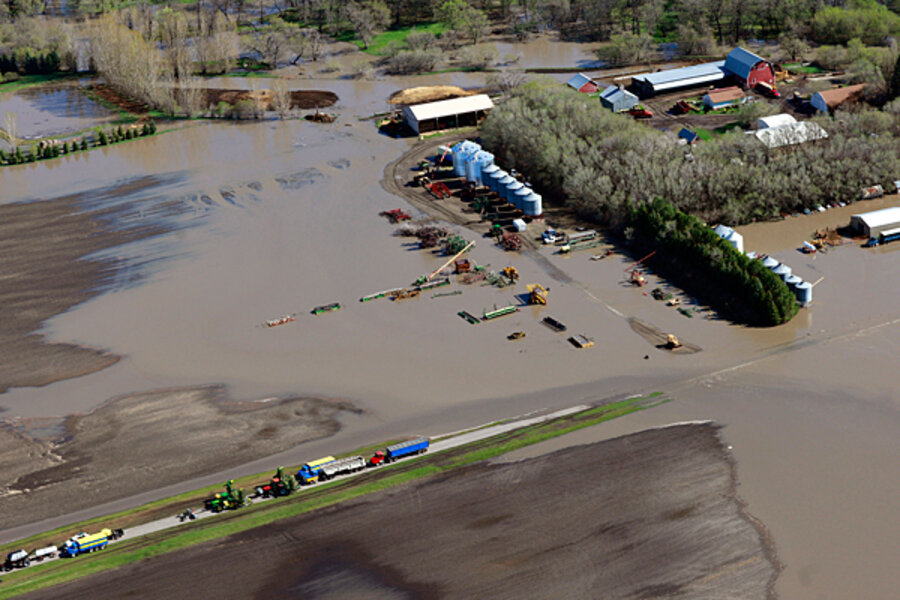In soggy North Dakota, hopes rise that floodwaters won't
Loading...
The 1,300 residents of Cavalier, N.D., may be breathing a little easier Thursday, as the threat that their town would be submerged in floodwaters began to abate.
The all-clear has not yet sounded to allow evacuees – virtually the entire town – to return to their homes. But an emergency levee built earlier this week by National Guard troops appears to be relieving pressure on nearby Renwick Dam, which officials had worried would be overwhelmed as the lake behind it rose amid a deluge caused by five days of unrelenting rain and runoff from feeder creeks and streams.
Renwick Dam on the Tongue River, located six miles west of Cavalier, is an earth-and-concrete barrier. Its failure would leave the downstream area standing in at least a foot of water, officials say. Cavalier is located about 85 miles north of Grand Forks in northeastern North Dakota.
The lake behind the dam had risen a perilous 17 feet, prompting concerns about the dam's ability to hold the water. However, by Thursday the lake level had dropped about a foot.
“The situation is improving. Of course, there is still a threat level, but it is starting to dial back,” Pembina County Emergency Manager Andrew Kirking told the Associated Press Tuesday. Residents of Cavalier are expected to be able to go home sometime over the Memorial Day weekend.
Crystal, N.D., a smaller town about 15 miles south of Cavalier, has also evacuated, amid reports of basement flooding in at least 30 homes. Those waters also began to recede on Thursday.
The challenges this week in North Dakota mirror those across the Midwest, which has seen some treacherous spring floods.
In late April, the Mississippi River crested 10 to 12 feet above flood stage in several spots from the Quad Cities area on the Iowa-Illinois border to St. Louis, causing three deaths, swamped farmland, and highway closings. In St. Louis, 114 barges broke loose on the Mississippi, and 10 of them sank, according to US Coast Guard officials.
Major floods inundated the Northwest Side of Chicago and nearby suburbs, where the Des Plaines River swelled to about 11 feet above flood level in late April, its highest in 27 years. The Illinois River, which runs southwest and empties into the Mississippi River, broke a 70-year high-water record near Peoria, Ill.; volunteers prevented flooding by surrounding the city’s downtown with a three-foot-high wall of sandbags.
Last summer, the Midwest experienced a severe drought. This spring's wet weather is not necessarily a boon, however. It has prevented or delayed spring planting, as farmers wait for their fields to recover from oversaturation. By late April, only 1 percent of the Illinois corn crop had been planted, compared with the average 24 percent for that time of year, the US Department of Agriculture reported. The best way for Midwestern farmers to emerge from the drought, say agriculture experts, is to receive a period of wet weather that can be sustained over a season, not one that is dumped on the area in a few days or weeks.








